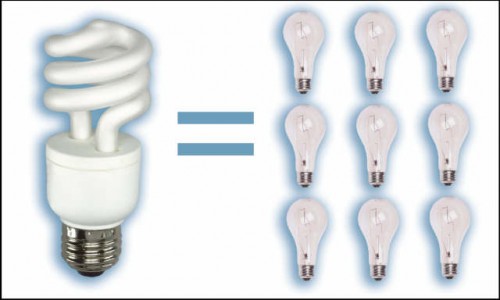Aggressively replacing the world’s incandescent lightbulbs with compact fluorescent lamps (CFLs) could reduce lighting energy demand by nearly 40 percent and cut greenhouse gas emissions from day one, according to the latest Vital Signs Update released by the Worldwatch Institute. By 2030, these savings would add up to 16.6 billion tons of carbon dioxide—more than twice the amount released in the United States every year.
Electric lighting consumes more than 19 percent of the world’s electricity, causing as much greenhouse gas pollution every year as half of all the light passenger vehicles on the road worldwide. CFLs help lower energy demand and reduce greenhouse gas emissions because they use about 75 percent less energy than traditional lightbulbs.
“CFLs are a winning technology, cleaning up pollution and saving consumers money on their energy bills at the same time,†said Alice McKeown, a researcher for the Worldwatch Institute.
Fortunately, strong growth in CFL production and sales can be seen worldwide. Between 2001 and 2006, production of CFLs in China—which accounts for roughly 85 percent of global output—tripled from 750 million units to 2.4 billion units. Sales of CFLs in the United States alone rose by more than 300 percent early in the decade, growing to 397 million units in 2007. At the same time, the total number of CFLs in use worldwide nearly doubled from an estimated 1.8 billion to 3.5 billion in 2003.
“CFLs are an important part of the solution to climate change and are available today, not somewhere down the line,†said McKeown. “We need to double our efforts to flip the switch for consumers worldwide.â€
And after we switch to CFL’s we can switch to LED’s and further reduce our energy needs. Efficiency, combined with a strong push for renewable energy can and will solve our energy problems in the future.
